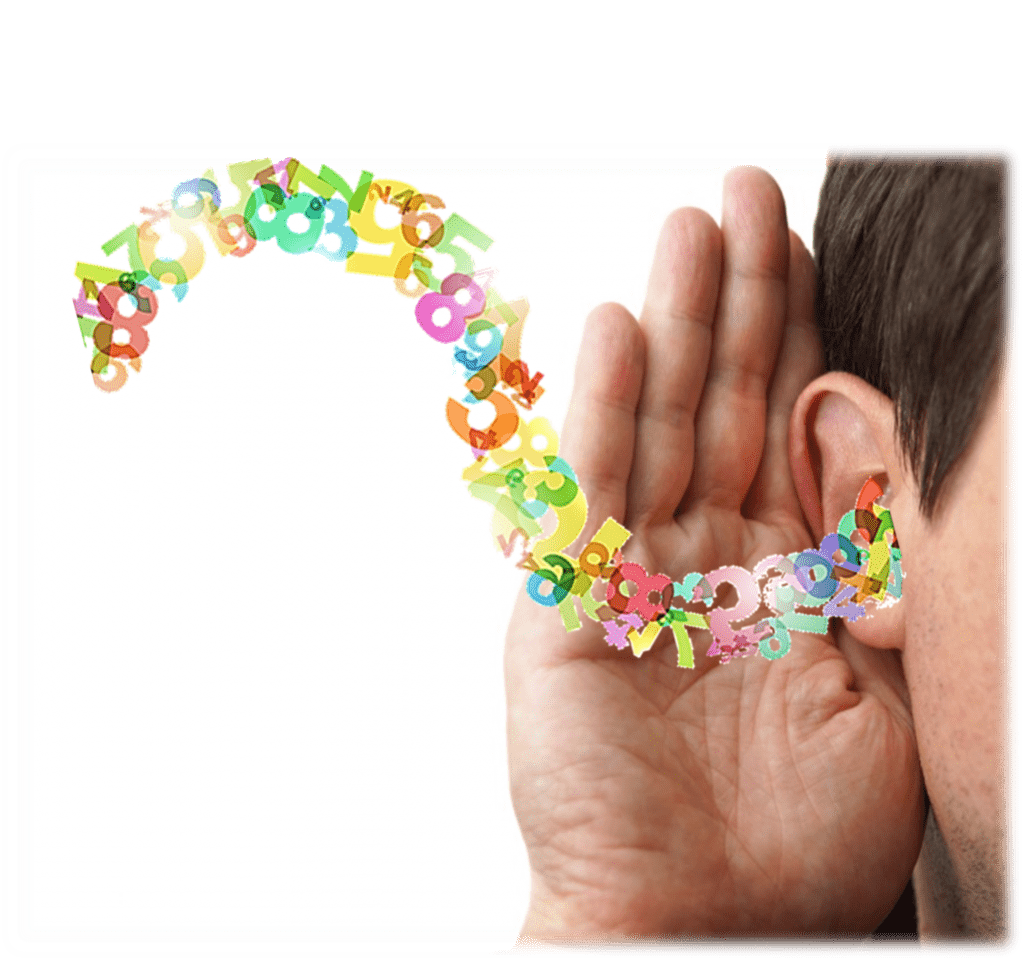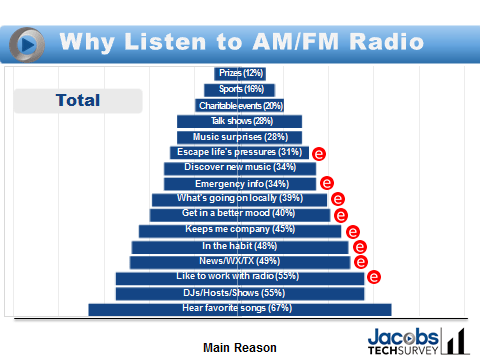These days at Jacobs Media, we’re all busily preparing slides and charts to present first to 200+ stakeholder stations – and then to conventions and conferences, starting with the Worldwide Radio Summit later this month in L.A. But what we’re really working hard on is looking at the data to find stories that help better explain the changing media landscape and what it means.
This is our 11th study, and as I riff through the slides looking for patterns and clues, it is always interesting how certain findings jump off the page – while others need to be carefully discovered and extracted from the spreadsheet.
So we like to think of ourselves as “data whisperers” – staring at the numbers, and deciphering what they’re trying to tell us about a fluid, ever-changing media environment.
There are always surprises, but as any researcher will tell you, the one thing we simply cannot stand hearing at the end of a spirited meeting is this line:
“That was a good presentation, but we already knew most of that stuff.”
First, there’s a lot to be said for data that confirms your suspicions and beliefs. And second, we hope Techsurvey11 will contain a few genuine nuggets you’ve come to expect from this research series. In past years, everything from the “cell phone only” dilemma to the disappearance of the clock radio to the power of social media acknowledgment has come from these massive web-based studies.
This year will be more of the same – in a good way.
As our Techsurveys evolved over time – as smartphones, social media, and “connected cars” came into our lives – one of the guiding tenets became helping broadcasters understand what their listeners were doing when they weren’t spending time with their stations.
But over the years, these studies took on the opposite task of reminding broadcasters why audiences still flock to AM/FM radio despite a sea of infinite choice that includes digital music collections, pure-plays, satellite delivered radio, and on-demand programming. Even with all these new information and entertainment sources, most consumers somehow find their way back to broadcast radio. But interestingly, the reasons why aren’t typically the things that are investigated in most perceptual research.
A few years ago, we decided to ask respondents to create a hierarchy of importance for AM/FM radio. In short, why are people still listening, and what jobs are they hiring broadcast stations to do for them as media options proliferate.
In the past few weeks, we’ve leaked a few data slides, but I think the misshapen pyramid below may be the most important of them all to radio. In the survey, we provide respondents with a long list of attributes, and ask them to tell us which ones are the main drivers behind why they tune in AM/FM stations.
So what’s going in here? Well, if you look at the bottom of the pyramid – the main factors that explain broadcast radio’s continued appeal – you see that the old standards, favorite songs and DJs are of paramount importance. And with that finding, you are thinking, “But we knew that without your 41,634 person sample tell us.
But start working your way up the pyramid, and something fascinating takes shape. It’s not about the “Greatest Hits of the ‘60s, ‘70s, and ‘80s” slogans or correct caller ticket giveaways (look at the very top of the pyramid), but some of the key visceral reasons why broadcast radio still matters.
It becomes about the emotional underpinning that explain “Why radio?”
And I’ve marked all of them with a little red “e” – for emotion. But it could also be environmental, because these are mostly personal benefits from radio listening you won’t get from SiriusXM, Snapchat, or Spotify.
Respondents love to work with the radio on. They depend on the medium for information, local happenings, and of course, emergency alerts.
Working up the pyramid, we learn that while habit plays a role in broadcast radio listening – and having a routine can be a good thing – we also sse that consumers “hire” radio for companionship and mood enhancement. Those might be something that agencies and advertisers ought to know about because no other medium has a more intimate relationship with its audience than radio.
Finally, there’s escape. In fact, three of every ten tell us that getting away from the hardships of everyday life is a main reason why they tune into their favorite station. I can tell you this attribute rated even higher during the economic downturn that started in 2008-09. While not as pronounced in this year’s study, radio – when it’s on its game – has the ability to transport audience to more fun, interesting, funnier, and more distant places.
(Of course, the pecking order differs when you look at gender, age, and format preferences – data that our stakeholder stations will be no doubt studying in the coming weeks.)
A chart like this restores my faith in the medium that I’ve been deeply involved with for well more than four decades. It’s a reminder that even during changing times, broadcast radio has a vaunted place in the lives and minds of millions of listeners.
And this data isn’t whispering.
It’s screaming.
We should be all ears.
- What To Do If Your Radio Station Goes Through A Midlife Crisis - April 25, 2025
- A 2020 Lesson?It Could All Be Gone In A Flash - April 24, 2025
- How AI Can Give Radio Personalities More…PERSONALITY - April 23, 2025






Thank you, Fred. Let’s Hear it for “E!” Emotion IS our Environment. And, how about some essential “P!” PASSION was recently mentioned as a huge factor; if operators fuggittaboutit the audience will do the same. Oh, and the need for Our Big “C”. CONTENT. “D” for Digital means more effective Delivery (not Drop everything to monetize it – Use it to Delivery the best Content). Today’s ABC Equation: E + P x C / D = $$$ It’s radio’s season to kick ass and take names: ALL AUDIO ALL THE TIME, Everywhere, Wireless & Free! Clark
Thanks for taking the time to comment, Clark.
So the listeners have it right – they’ve cited almost all of the things that separate radio from the Pandoras and Spotifys as their reasons for listening. Interesting that virtually all of the “e”s and the DJ’s hosts rung are being squandered by radio’s increasing insistence on phoning it it.
The listeners get it – the top minds of radio…not so much.
Completely unrelated – a nice article about a very personal meaning to a classic rock song:
https://on.wsj.com/1a1ADqn
Bob, that’s one of the key reasons why we do these Techsurveys. We all need reminders about our mission and our purpose, and hopefully charts like this will cause everyone – from CEOs to PDs to DJs – to stop for a moment and thing about it.
And on that unrelated note, thanks for sending along that “Our House” story. For me, it reinforces the power of Classic Rock and the music we grew up with. We all have deep, deep memories of how certain songs impacted us and made us feel, often at key moments in our lives. Thanks for sharing it.